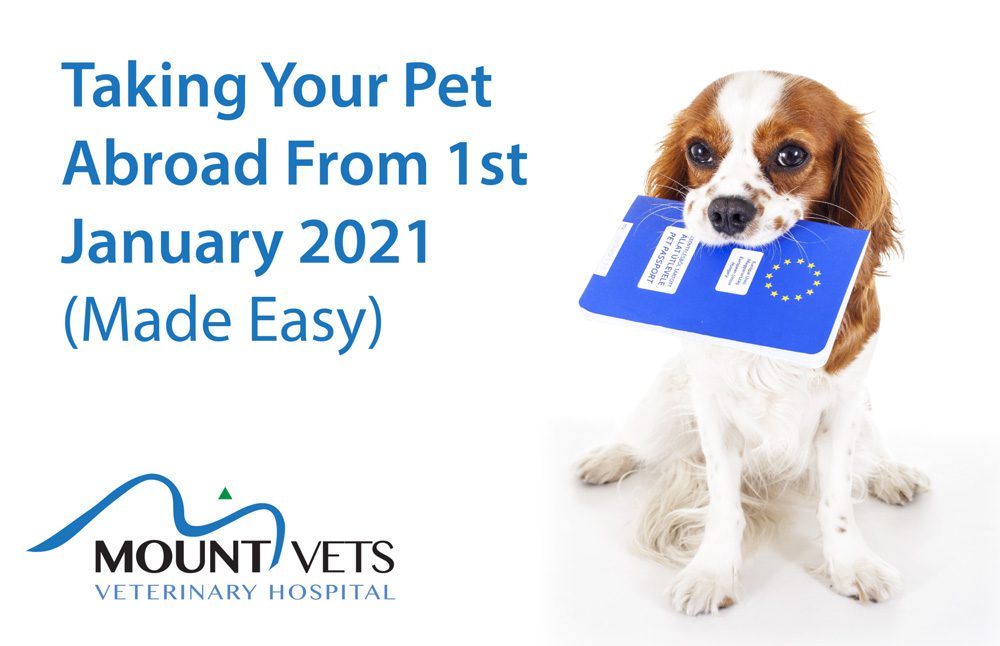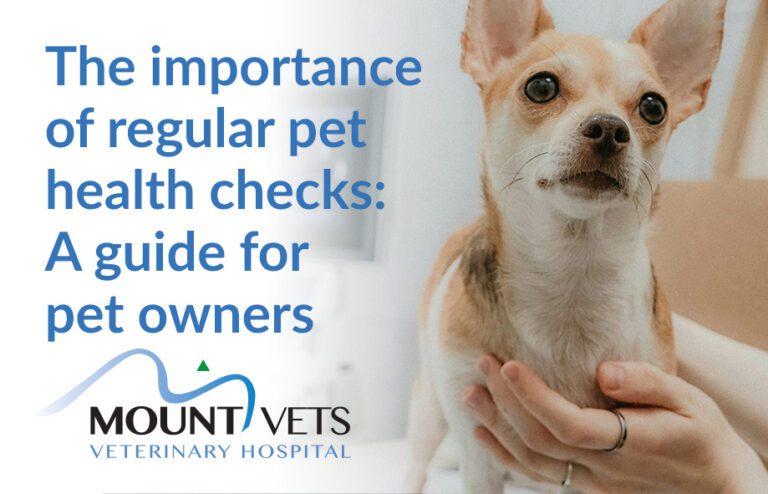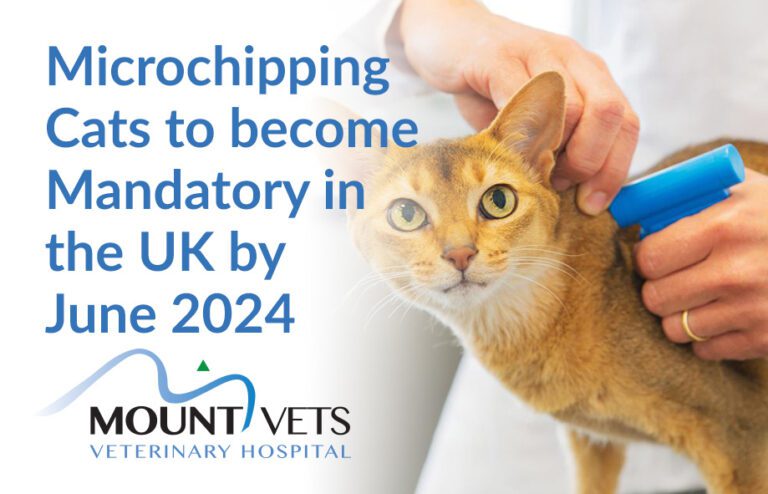UK to EU pet travel form
Please complete this form in advance of your appointment

On the day of your appointment, we will need you to bring with you:
- Proof of rabies vaccination and proof of identification of the pet. If you have a Pet Passport for your pet that was issued before 31/12/2020 this will suffice. If you do not have a Pet Passport for your pet then please bring your vaccination card that shows the current rabies vaccination.
- A document confirming your pet has been micro-chipped.
If you have any problems obtaining these documents please contact:
Pet Travel Scheme helpline: [email protected] Telephone: 0370 241 1710 Monday to Friday, 8.30am to 5pm (closed on bank holidays)
Download this application form:
Please fill in the following details:, your appointment.
- This form is only intended for those who already have an appointment booked with us. If you are planning to travel with your pet and would like to book an appointment with us, please call your local branch: Dundee: 01382 810777 Barnhill: 01382 739634 Arbroath: 01241 293777
- Dundee Branch
- Barnhill Branch
- Arbroath Branch
Application Details
- Owner's Name * Title Dr Miss Mr Mrs Ms Prof. Rev. Prefix First Last
- Owner's Address * Street Address Address Line 2 City County / State / Region ZIP / Postal Code
- Telephone Number *
- Email Address *
- Point of entry into the EU (Which country are you entering into FIRST) *
- Person who has authorisation in writing from the owner to travel with the pet
- Designated carrier contracted by the owner to travel with the pet
Tapeworm free countries Tapeworm treatment for dogs is required when travelling from Great Britain to EU listed tapeworm free countries including Northern Ireland, Malta, Ireland, and Finland. Dogs must be treated for tapeworm not more than 120 hours and not less than 24 hours before time of entry into one of these countries. Please select from one of the following options (not applicable to cats or ferrets).
- Northern Ireland
- None of the above
NB before returning to Great Britain dogs must be treated for tapeworm not less than 24 hours, not more than 120 hours before time of entry except for return from Northern Ireland, Finland, Ireland, or Malta. You must take your AHC with you for this treatment to a vet in the EU country you are in. If you are leaving Great Britain on a short trip returning within 120 hours you need to have this treatment done before leaving.
- I declare that the information entered above is accurate and correct. By submitting this form, I agree that Parkside Veterinary Group will use this information to complete an Animal Health Certificate (AHC) and any errors or omissions in the information I have provided may invalidate this AHC. Any invalidation of an AHC caused by errors or omissions in this form is entirely at my own risk.

- European Transport
- UK Pet Transport
- Worldwide Pet Transport
- Transport for Dogs
- Transport for Cats
- Testimonials
- Advice Blog
- Get a Quote
- Privacy Policy
UK And EU: Pet Compliance Checklist
Connie Powell November 25, 2021 Paw Pet Travel Tips & Advice

Full article with thanks to: eurotunnel.com/uk/travelling-with-us/travelling-with-your-pet/checklist
All pet dogs, cats and ferrets (including guide and hearing dogs) can enter or re-enter the UK from any country in the world without quarantine provided they meet the rules of the scheme, which will be different depending on the country or territory the pet is coming from. Please remember you are responsible for ensuring this is the case for your cat, dog or ferret prior to travel.
As the market leader for pet travel, we have compiled a list of the DEFRA procedures for you to follow to ensure your pet complies with the current PET Travel Scheme rules from 1 st January 2021.
PET Travel Scheme rules from the 1st January 2021
Following the implementation of the new model of Pet Passport from the 29 th December 2014, some changes to the PET Travel Scheme rules will apply from 1 st January 2021. You are responsible for ensuring your pet meets all of the rules for entering the EU before it leaves the UK and also complies with the rules for entering the UK under the PET Travel Scheme. Further details can be found at the DEFRA website .
We strongly advise you to read these carefully, if any of the details are incorrect or missing when you check-in at our Pet Receptions located at both our Folkestone & Calais terminals, your pet will not be allowed to travel.
Our Pet Reception on the Folkestone terminal is a designated Travellers’ Point of Entry (TPE) to the EU.
In order to identify your pet (dog, cat or ferret) it must be fitted with a microchip, before or the same day as the initial rabies vaccination is carried out.
The microchip number of the animal must be identical to the microchip number on the pet’s documentation.
A tattoo from any country in the world is acceptable providing it has been done at the latest on the 3 July 2011.
When the vet is completing your pet’s official travel documents, make sure the date of implantation or date of the reading of the microchip is the same date as, or before, the rabies vaccination.
EU Pet Passport or Animal Health Certificate
From 1st January 2021, the UK will be categorised as a Part 2 listed third country under the EU Pet Travel Scheme. This means if your pet(s) have an EU Pet Passport, issued in Great Britain, this will no longer be valid for travel to the EU and you will be required to obtain an Animal Health Certificate (AHC).
However, if your pet(s) have an EU Pet Passport, issued in Great Britain before 1st January 2021, they will be accepted for entry into the UK .
For animals being prepared in an EU country, you should get an EU Pet Passport.
If you are preparing your animal in a non-EU Listed or Unlisted Third Country or Territory, you will need to obtain an Official Third Country Veterinary Health Certificate.
Rabies vaccination
Your pet (who must be at least 12 weeks old at the time of vaccination) must be vaccinated against rabies. There is no exemption to this requirement.
The vaccine name and manufacturer, as well as vaccination date , valid from and expiry dates, must be recorded in the AHC or EU Pet Passport by a registered vet (signature and stamp or vet details are mandatory) in the relevant boxes in the Rabies Section of the EU Pet Passport or AHC.
There is no exemption to this requirement. If you are travelling from the EU and listed non-EU countries, the length of the waiting period before entry to the UK is 21 days after the vaccination date (the vaccination date counts as day 0). A waiting period is not required for subsequent entries into the UK, provided rabies boosters are kept up to date and recorded in your pet’s official documentation. If the vaccination is in two parts the 21-day wait will be from the date of the second vaccination.
Travel to/from the EU must take place within the current vaccination validity.
When the vet is completing your pet’s official travel documents (AHC or EU Pet Passport), make sure the date of implantation or date of the reading of the microchip is the same date as, or before, the rabies vaccination.
Tapeworm treatment (dogs only)
Your dog must be treated against tapeworm before travelling to the UK.
Treatment must be administered by a vet not less than 24 hours (1 day) and no more than 120 hours (5 days) before the dog’s scheduled arrival time in the UK. The treatment date and time must be recorded by the vet in the pet’s documentation.
Short trips
If you’re leaving Great Britain for a short trip, your dog must be treated by a vet before you go. You must wait for 24 hours before re-entering Great Britain and return within 120 hours or you’ll need to get another treatment abroad. You should treat your dog again within 28 days of returning to Great Britain.
Please note if the tapeworm treatment is not administered in time or correctly documented by a vet, it will result in your pet being refused travel.
Tapeworm treatment must:
- Be administrated by a vet
- Must contain Praziquantel to be effective against Echinococcus tapeworm
The following products: Stronghold, Advocate, Frontline or Frontline Combo, Nexgard or Nexgard Spectra will not be accepted and will result in the animal being refused travel.
Veterinary certificate (for Rabbits, Rodents, and Reptiles etc)
This is a health certificate document for domestic pets (other than dogs, cats, ferrets) from non-EU countries to the EU. This form must be completed by a vet within 10 days of travel and can be used to travel to and from the UK and France. It will be inspected by border control agents, so there is no need to visit our Pet Reception or declare these animals on your booking.
Blood test (not required)
Blood test is no longer required if you are entering the UK from the EU and listed non-EU countries.
If entering the UK from unlisted non-EU countries a blood sample must be taken at least 30 days after the rabies vaccination and the length of the waiting period before allowing a dog, cat, ferret to travel is three calendar months from the date your vet took the blood sample which led to a satisfactory test result from an approved laboratory.
Get the latest from our pet advice blog .
If you’re looking to travel your pet within or outside the United Kindom (Example: Birmingham to Paris), then get in touch with us by completing our quick and easy quote form .
Wellington: 01823 662286
Wiveliscombe: 01984 624422
Taking Pets Abroad From the UK
- January 1, 2021
- Cats , Dogs , Guides , Pets , Travel

When considering any pet travel please check the gov.uk website for the most up to date information contact APHA to discuss any specific questions you have.
Correct as of 31st March 2021. Please note: this guidance is aimed at the non-commercial movement of UK pets (dogs, cats and ferrets) travelling from Great Britain as a Part 2 listed country. There’s different guidance if you’re bringing your pet dog, cat or ferret to the UK . Read the Border Operating Model if you want to export pets to an EU country or Northern Ireland for commercial reasons such as a change of ownership.
Planning on travelling to the EU with your pet from 2021?
What does this mean for you.
- Unless you’re a UK national living in the EU, your EU pet passports are no longer valid (when leaving Great Britain) from 1st January 2021. Instead, you will need an Animal Health Certificate (AHC).
- When travelling to the EU or Northern Ireland, your pet (including assistance dogs) needs:

A Microchip

A valid rabies vaccination

An animal health certificate (unless you have a pet passport issued in an EU country).

Tapeworm treatment for dogs (if you’re travelling directly to Finland, Ireland, Northern Ireland, Norway or Malta).
Main points to remember about getting an AHC
- The earliest date we can complete an AHC is on the 22nd calendar day post rabies vaccination.
- The AHC is a 10-page document which will take a minimum of an hour to complete therefore we advised not booking to travel on the same day as the appointment.
- The AHC cannot be completed any earlier than 10 days before travel.
- To be able to book in for an AHC we need you to complete the below form.
- Up to 5 pets will be able to travel on a single AHC.
- A new AHC will be required for each journey to/from UK (you will be able to travel for 4 months around Europe providing the rabies vaccination does not expire during that time).
- If travelling directly to Finland, Ireland, Malta, Northern Ireland or Norway the tapeworm treatment will need to be given no less than 24 hours and no more than 120 hours (5 days) before you arrive.
- If planning a day trip only the tapeworm treatment will need to be given and recorded prior to travel as you will be unable to re-enter the UK until 24hours post tapeworm treatment.
- The person who is travelling with the pet must be at the AHC appointment as there is a section that must be signed by both the OV and the person travelling.
- If the owner is not travelling with the dog, we need a signed document from the owner specifying the name of the person who is travelling with the pet.
- An AHC cannot be used if the pet is being sold.
Please note that some countries have additional restrictions and requirements to travel to them. To keep you from scrolling through reams of information, we have provided guidance for the most common circumstances in easy-click tabs below. If your circumstances are not listed below, please give us a call and we will advise you as best we can, given the current information provided by the UK government.
Need to make an appointment?
You can no longer use a pet passport issued in Great Britain (England, Wales and Scotland) for travel to an EU country or Northern Ireland.
You can still use a pet passport issued in a (current) EU country.
If you have a pet passport issued in Northern Ireland, contact your vet for advice before travelling. You can also read about changes to pet travel on the NIDirect website
Your pet will need a new animal health certificate for each trip to an EU country or Northern Ireland.
You will need to bring your pet to us within 10 days of your travel date to get an animal health certificate. There should be no problems issuing you with one, as long as your pet is microchipped and vaccinations up to date.
Your pet’s animal health certificate will be valid after the date of issue for:
- 10 days for entry into the EU or Northern Ireland
- 4 months for onward travel within the EU
- 4 months for re-entry to Great Britain
Your dog will need tapeworm treatment for each trip if you’re travelling directly to Finland, Ireland, Malta, Northern Ireland or Norway.
Rabies vaccination, boosters and blood tests
You must get your dog, cat or ferret vaccinated against rabies before it can travel. Your vet needs proof that your pet’s at least 12 weeks old before vaccinating them.
If you’re taking your pet to the EU or Northern Ireland, you must wait 21 days after the primary vaccination before you travel.
You must get your pet microchipped before, or at the same time as, their rabies vaccination. If you do not, they’ll need to be vaccinated again.
The vaccine must be an inactivated vaccine or recombinant vaccine that’s approved in the country of use.
Booster vaccinations
If you’re travelling with your pet, you must get regular rabies booster vaccinations for your pet. Check your animal health certificate to find out when the booster vaccination is due.
You will not need to get repeat vaccinations for repeat trips to the EU or Northern Ireland if your pet’s rabies vaccination is up to date.
Rabies vaccination record
Your pet’s rabies vaccination record in their animal health certificate must show:
- your pet’s date of birth
- microchip number, date it was put in or read, and where it is on your pet’s body
- rabies vaccination date
- rabies vaccine manufacturer, product name & batch number
- date the rabies vaccination is valid until
- the vet’s signature and contact details
Your pet can be stopped from travelling if the details in their animal health certificate are in the wrong place.
Tapeworm treatment for dogs
A vet must treat your dog for tapeworm and record it in the AHC if you’re travelling directly to:
- Northern Ireland
The treatment must have been given no less than 24 hours and no more than 120 hours (5 days) before you arrive.
The treatment must:
- be approved for use in the country it’s being given in
- contain praziquantel or an equivalent proven to be effective against the Echinococcus multilocularis tapeworm
Short trips
If you’re leaving Great Britain (England, Wales and Scotland) for a short trip to visit countries other than Finland, Ireland, Malta, Northern Ireland or Norway, you could have your dog treated by a vet before you go.
You must wait for 24 hours before re-entering Great Britain and return within 120 hours or you’ll need to get another treatment abroad.
Information your vet needs to record
Check the vet has put the following details in the ‘Echinococcus treatment’ section of your dog’s pet animal health certificate:
- the name and manufacturer of the product
- the date and time they treated your dog
- their stamp and signature
You cannot take more than 5 pets to an EU country or Northern Ireland unless you’re attending or training for:
- a competition
- a sporting event
You’ll need written evidence of registration for the event when you travel.
All your pets must:
- be attending the event or training
- be over 6 months old
- meet all the other requirements for pet travel to that country
Arriving in an EU country or Northern Ireland
You’ll need to go through a travellers’ point of entry when you arrive in an EU country or Northern Ireland.
You may need to show your pet’s animal health certificate along with proof of their:
- rabies vaccination
- tapeworm treatment (if required)
Help and support
You can contact the Animal and Plant Health Agency (APHA) if you’ve got questions or need more information. Alternatively, c ontact the Pet Travel Scheme helpline if you need more information about pet travel.
Pet Travel Scheme helpline [email protected] Telephone: 0370 241 1710 Monday to Friday, 8.30am to 5pm (closed on bank holidays) Find out about call charges
There is no change to the current health preparations for pets leaving Great Britain to a non-EU country since becoming a part 2 listed country.
If you’re travelling to a non-EU country, you’ll first need to complete an export health certificate (EHC), which then needs to be approved by the Animal and Plant Health Agency (APHA), and finally forwarded on to your vet . You’ll also need to complete an export application form (EXA) if you’re in England, Scotland or Wales.
The export health certificate and the export application form for each country and pet will tell you how to apply.
An EHC checks that your pet meets the health requirements of the country you’re travelling to.
You must nominate an official vet who will be sent the EHC. They’ll check your pet has met the correct health and identification requirements before you travel.
Check the rules of the country you’re travelling to for any additional restrictions or requirements before you travel.
You can contact the Animal and Plant Health Agency (APHA) if you’ve got questions or need more information.
Animal and Plant Health Agency [email protected] Telephone: 03000 200 301 Monday to Friday, 8.30am to 5pm Find out about call charges
If you live in Great Britain, your EU pet passport is no longer valid (when leaving Great Britain). An AHC is a document that needs to accompany your pet when travelling without a valid pet passport.
Your pet’s AHC will be valid for:
- 10 days after the date of issue for entry into the EU
- onward travel within the EU for 4 months after the date of issue
- re-entry to Great Britain for 4 months after the date of issue
Your pet will need a new AHC for each trip to an EU country or Northern Ireland.
Your pet will not need a repeat rabies vaccination so long as its rabies vaccinations are up to date.
Your dog will need tapeworm treatment for each trip if you’re travelling directly to Finland, Ireland, Malta, Northern Ireland or Norway.
The rabies vaccination is required every 3 years under EU law but is recommended annually.
Pets must be 12 weeks old to have the rabies vaccine and you must then wait 21 days before travelling to allow the vaccine to work correctly. This means your pet will be 15 weeks old before it can travel.
Owners of assistance dogs returning from the EU do not have to travel on approved routes but they must notify the point of entry in advance that they are travelling with an assistance dog to ensure the appropriate checks are done.
Click here to view the approved routes on the government’s website.
Click here to view the approved routes on the government’s website.
You must get your pet microchipped before, or at the same time as, their rabies vaccination. If you do not, they’ll need to be vaccinated again.
Microchipping for pet travel can only be done by:
- a vet nurse, student vet or student vet nurse (directed by a vet)
- someone trained in microchipping before 29 December 2014, and with practical experience
- someone who has been assessed on an approved training course - contact the Department of Agriculture, Environment and Rural Affairs (DAERA) if the course was in Northern Ireland
Make sure your vet puts the microchip number in your animal health certificate . The date must be before your pet’s vaccinations.
Airlines, train and ferry companies in the EU can read microchips that meet International Organization for Standardization (ISO) standards ISO 11784 and ISO 11785.
You may have to bring your own microchip reader when you travel if your pet’s microchip does not meet ISO standards. You should check with your travel company before you leave.
If the microchip cannot be read
You’ll have to do all the preparation again if your vet cannot read the microchip. This means you’ll have to ask your vet to:
- rechip your pet
- revaccinate your pet
- issue a new animal health certificate if you’re travelling to the EU or Northern Ireland
- record new microchips in the ‘Marking of animals’ section of the new animal health certificate
You’ll have to wait the required time before you can travel if your pet is revaccinated or has new blood tests.
If the microchip can only sometimes be read
Your vet should try to read the microchip. If they get a reading, they can rechip your pet (the original chip is not removed).
This must be recorded in the animal health certificate in the ‘Marking of animals’ section with:
- the number of the old and new chips
- the date they were read
- the date the new chip was inserted
The vet must sign and stamp the page in the animal health certificate.
Your vet should record in the ‘Others’ section of the animal health certificate that your pet has been rechipped .
You do not need to have your pet microchipped if it’s been tattooed with an identification number and all of the following are true:
- you’re travelling to the EU or Northern Ireland
- your pet was tattooed on or before 3 July 2011
- the tattoo is clearly legible
- your pet was vaccinated against rabies after it was tattooed
Your vet must record the date of tattooing, the tattoo number and the date of the rabies vaccination in the animal health certificate.
We are qualified official veterinarians (OVs)...
Please call: 01823 662286.
References:
- https://www.gov.uk/taking-your-pet-abroad
- https://www.gov.uk/guidance/pet-travel-to-europe-after-brexit
- https://ec.europa.eu/info/sites/info/files/file_import/travelling_en_6.pdf
Continue reading...

The importance of regular pet health checks: A guide for pet owners
Our pets bring boundless joy and companionship into our lives. From wagging tails to soothing purrs, they fill our homes

Microchipping Cats to become Mandatory in the UK by June 2024
In recent years, microchipping has emerged as a revolutionary tool in the world of pet identification. In this country, we’re
- International edition
- Australia edition
- Europe edition

Pet travel after Brexit: taking a dog to the EU could cost £300 a time
With pet passports issued in Great Britain no longer valid, owners fork out for health certificates and jabs
If you are thinking about taking your dog elsewhere in Europe this year, then brace yourself for an expensive and time-consuming headache.
Pet owners say they are having to fork out hundreds of pounds for the necessary paperwork after post-Brexit rule changes.
Pet passports issued in Great Britain are no longer valid for travel to EU countries (you can still use a pet passport issued in an EU country, Northern Ireland or a few other places but check it will be accepted before you travel).
Now, before a pet dog – or cat or ferret – can travel to the EU, its owner has to obtain an animal health certificate (AHC) for it.
To get the certificate, the pet must be microchipped and vaccinated against rabies. A rabies jab typically costs about £50 but some vets charge as much as £80.
You must take your pet to your vet to get an AHC and – crucially – do this no more than 10 days before you travel.
Make three trips to the EU with your pet and you could face paying almost £1,000 for the certificates that are now required, although prices vary hugely.
Even if you are not going away until July or August, now is the time to act because some vets are already heavily booked up for this summer. If vet practices end up having to turn people away, it could threaten a pet version of the UK’s passport delay chaos .
The coronavirus pandemic triggered an explosion in pet ownership levels but surveys have indicated that the majority of dog owners are unsure of the rules concerning taking their animal to the EU.
Mairead McErlean was this week told it would cost £220 to get an AHC for her English bulldog, Pepper, plus another £65 for the rabies jab needed to get the certificate, and £15 for the worming treatment required for her trip – a total of £300.
She is travelling to Ireland in July and says £300 “is more than my ferry and my petrol … I’m so cross about the whole thing”.

McErlean has family in Ireland and says: “If I make three trips a year, which, pre-Covid, would have been pretty normal for me, that’s nearly £1,000 to take her with me.”
Pepper, who is almost five, is a rescue dog and has abandonment issues, so putting her into kennels is not an option, she adds.
Later in the summer, McErlean is going to France with friends, and is planning to take Pepper, so that is at least another £220 she will have to pay, plus whatever fees a vet in France charges for the paperwork for the return trip.
When she phoned her vet this week she was told that July was “really busy” and she would be lucky to get a slot as other people had already booked the AHC appointments.
Eventually the vet told McErlean, who lives in Milton Keynes, that they would squeeze her in.
However, she adds: “If my parents move to Ireland permanently, what do I do in an emergency? The only option would be for my partner to stay at home with Pepper.”
The Kennel Club says an AHC typically costs between £100 and £200 . This usually includes the consultation and reviewing the paperwork. However, each veterinary practice sets its own price and there have been reports of some vets charging more than £300.
You can add up to five pets to an AHC, and often you will pay less for the additional animals.
One woman posted on Facebook earlier this month that she had paid £230 to take two dogs to France. “While there, I obtained two worming tablets and two French pet passports for €34 (£29),” she said, adding: “I did have to provide proof of a French address.” However, it was recently reported that the rules for obtaining French pet passports have been tightened up .
When Guardian Money did a price check this week, we found that many of the vets who are part of the CVS Group – which runs more than 500 practices – are charging £250 for the first pet and £50 for any additional animals.
At the cheaper end, we found a practice in Folkestone, Kent , that says it charges from £75, and one in Havant, Hampshire , that charges £99 for a standard AHC.

The certificate needs to be signed by an “official veterinarian”, or OV, not just anyone at the practice. Some practices do not have an OV, and those that do will often limit how many AHC appointments they book in. We spoke to a practice in north-east London that is booking in only one a day.
Once issued, an AHC lasts for four months, which includes any travelling around Europe.
However, the certificate is valid only for a single trip into the EU. So every time you make a new trip to an EU country from Great Britain, your pet will need a new AHC, even if your last one was issued only a few weeks earlier.
Vets say the reason the certificates can be pricey is that there is quite a lot of work involved: the form runs to about 10 pages and needs to be completed in English and the language of the “country of entry” to the EU.
Dr Ed Hayes, the head of public affairs at the Kennel Club , says Covid travel restrictions have delayed the impact of AHCs, adding: “It’s going to be a bigger issue this year.”
However, he says owners of second homes who make multiple trips may be able to obtain an EU pet passport issued by that country. “Try to find a local vet,” he says.
The British Veterinary Association says AHCs are considerably more complex and time-consuming than the previous EU pet passport system, so practices have to factor in the extra resources required to complete them when setting their costs and deciding how long they may need to offer for an appointment. “Some practices have had to make the difficult decision not to offer AHCs, as they simply don’t have the time and capacity to deliver them. It is also important to note that the vet needs to be a certified official vet, so legally only some vets can sign the certificates.”
BVA president Justine Shotton says changing the requirements is outside of the profession’s or the UK government’s control, as they are set by the EU, but it has asked ministers to offer practical support for “simplifying and streamlining” the process.
Other things to be aware of
A vet must treat your dog for tapeworm and record it on the AHC or pet passport if you are travelling directly to Ireland, Malta, Finland or Norway.
Also (although this is not a new requirement), when coming back to Great Britain, dogs must typically receive treatment for tapeworm one to five days before returning.
You cannot take more than five pets to an EU country unless you are attending or training for a competition, show or sporting event.
It is not clear how many owners get turned down for a a certificate. A veterinary industry expert says the vets who provide AHCs “do so within a very narrow scope, with specific conditions needing to be met (for example, rabies vaccination requirements and specific timing requirements), and if a client is turned down, it may be because they do not meet these conditions”.
- Consumer affairs
- European Union
Most viewed
- Somerset Road 24/7 Surgery
- Birchencliffe
- Heckmondwike
- Sowerby Bridge
- Thongsbridge

UK to EU pet travel form to complete and return prior to your appointment
The named owner or person travelling with the animal must be present at the AHC appointment to sign the declaration.
We will need you to bring with you on the day of your appointment proof of rabies vaccination, and proof of identification of the pet. If you have a Pet Passport for your pet that was issued before 31/12/2020 this will suffice. If you do not have a Pet Passport for your pet then please bring your vaccination card that shows the current rabies vaccination, and a document confirming your pet has been microchipped. If you have any problems obtaining these documents, please contact:
Pet Travel Scheme helpline: [email protected] Telephone: 0370 241 1710 Monday to Friday, 8.30am to 5pm (closed on bank holidays)
UK to EU pet travel form
The named owner or person travelling with the animal must be present at the ahc appointment to sign the declaration. name (required) dr miss mr mrs ms prof. rev. title first name last name email (required) phone (required) address (required) street address address line 2 town county postal code for each pet you are travelling with, please provide the following details: (required) animal's name species: eg. dog/cat male/female neutered colour breed microchip number date of birth add remove click on the right hand + to add more animals point of entry into the eu * which eu member state are you entering into first (eg, if going by channel tunnel it will be france). (required) date of travel (please give exact date if possible) (required) dd slash mm slash yyyy who will be travelling with the pet (please select one, and provide further details if appropriate): (required) owner person who has authorisation in writing from the owner to travel with the pet (name, address, phone number) designated carrier contracted by the owner to travel with the pet (name, address, phone number) the named owner or person travelling with the animal must be present at the ahc appointment to sign the declaration. please note, you need to bring written authorisation or designated carrier paperwork to any appointment.
What is The Pet Travel Scheme (PETS)? [2023 GUIDE]

What is better than going on holiday? Going on holiday with your beloved furry friend!
Under the Pet Travel Scheme (PETS), you are able to bring your dog, cat or ferret abroad with you. Regularly, it is wrongly assumed that pets must endure a painful length quarantine period when going abroad. However, with a Pet Passport, under the PETS your pet can travel through certain borders with ease. Generally, pets will require a microchip and a rabies vaccination to qualify for travel. However, different countries have additional requirements when it comes to importing and exporting pets.
In this article we will discuss the Pet Travel Scheme in detail.
Table of contents:
What is the Pet Travel Scheme?
- What are the requirements to comply with the Pet Passport Scheme?
What countries are included in the Pet Travel Scheme?
- What are the requirements for the UK Pet Travel Scheme?
Which countries are exempt from quarantine under the Pets Travel Scheme?
When was the pet travel scheme introduced, what if my pet doesn’t pass the requirements for the pet travel scheme, what is the most common reason for failing requirements for the pets, can my puppy or kitten travel with me, are tattoos an acceptable form of identification, is there a limit to the number of animals that can travel under the care of one person.
The Pet Travel Scheme (PETS) is a system which allows animals to travel easily between member countries without undergoing quarantine . A pet passport is a document that officially records information related to a specific animal, as part of that procedure. The effect is to drastically speed up and simplify travel with and transport of animals between member countries, compared to previous procedures if the regulations are followed.
What are the requirements to comply with the Pet Travel Scheme?
ALL COUNTRIES
Most countries require the following to qualify for travel:
- Microchipping – all dogs, cats and ferrets must have a microchip implant. A microchip is a permanent method of electronic identification. The chip, around the size of a grain of rice, is implanted subcutaneously (just under the skin) between the shoulder blades at the back of your pet’s neck. Each chip has a unique number that is detectable with a microchip scanner.
- Rabies vaccination – all dogs, cats and ferrets must be vaccinated against rabies. This procedure is mandatory even if your pet already has a current rabies vaccination. In this case, your pet will need a rabies booster to keep them up to date. For pet travel in Europe, the rabies vaccine should be administered by a veterinarian with a minimum of 21 days before travel. Some countries may differ and always check with your local veterinarian for the procedures to follow.
SOME COUNTRIES
Some countries require the following to be permitted for entry:
- Tapeworm, tick and flea treatment – some countries require animals to be treated for ticks, fleas and tapeworms before boarding the outbound transport. There is usually a time restriction when it comes to administering these treatments. For example, a tapeworm treatment must be administered between 24 hours and 5 days before entering the UK, Ireland, Finland, Norway or Malta.
- Additional vaccinations – some countries will require additional vaccinations, such as those against distemper, parainfluenza, leptospirosis, parvovirus, bordetella and hepatitis.
- Rabies blood test – some countries need evidence that your pet’s rabies vaccination is working by taking a rabies blood test (also known as Rabies Titer Test). Your pet’s blood sample will be taken by a vet and send to an approved laboratory for testing. Your pet’s blood must contain at least 0.5 IU/ml of the rabies antibody. Normally, you will then need to wait 3 months before traveling.
- Health certificate – many countries require a veterinarian’s letter or certificate confirming that your pet is fit and healthy to travel and has no obvious signs of disease.
- Government certification – in some cases, you will need to get health certificates approved. For example, all animals leaving the US must have their health certificates endorsed by the USDA .
In some countries, the formal passport is needed. However, others will accept documentation in any form so long as it provides clear evidence of the procedure being followed.
Requirements vary widely between countries, so it is best to check those for your destination country before traveling with your pet.
In the next section we will discuss which countries are included in the Pet Travel Scheme, making it easier to travel.
With an EU Pet Passport, dogs, cats and ferrets can travel freely within the EU, and some non-EU countries without quarantine. The countries in each category are listed below.
EUROPEAN UNION (EU) COUNTRIES AND TERRITORIES
* When traveling to UK, Ireland, Finland, Norway or Malta, dogs must have a tapeworm treatment within 24 hours to 120 hours (1-5 days) of entry.
** Includes St Barthelemy and St Martin (French part of the island)
LISTED NON-EU COUNTRIES
* The Russian Federation consists of 88 subjects (regions). Please note that the following Republics are not part of the Russian Federation: Moldova, Georgia, Ukraine, Armenia, Azerbaijan, Turkmenistan, Uzbekistan, Kazakhstan, Kyrgyzstan and Tajikistan.
** The UAE consists of Abu Dhabi, Dubai, Al Sharjah, Ras Al Khaimah, Ajman, Umm Al Quwain, and Al Fujairah.
*** Formally known as the Netherland Antilles. The BES Islands are Bonair, Saint Eustatius and Saba.
**** The mainland United States of America as well as American Samoa, Guam, Northern Mariana Islands, Puerto Rico and the US Virgin Islands.
UNLISTED COUNTRIES
An unlisted country is any country not listed above.
These countries have not applied or been accepted for listed status because of higher rabies incidence or less robust veterinary or administrative systems. The rules for taking your pets to these countries, or returning to the EU from these countries are different than they are for EU member states and listed countries.
What are the requirements for the UK Pet Travel Scheme
Traveling to the UK from an EU or listed non-EU country
When traveling to the UK from an EU or listed non-EU country, your pet will need the following:
- A microchip – this is the first procedure you should consider. A microchip has a number unique to your pet and will help authorities to properly identify them. You must get this first, as a rabies vaccination is invalidated without a microchip number attached to it. If you get your pet’s rabies vaccination before getting a microchip, it will not count.
- date of birth/age
- microchip number
- when and where the microchip was inserted
- vaccination date and product name
- date its booster vaccination is due
- batch number
- Tapeworm treatment – before entering the UK, all pet dogs (including assistance dogs) must be treated for tapeworm. The treatment must be administered by a vet not less than 24 hours and not more than 120 hours (1–5 days) before its scheduled arrival time in the UK. (There is no mandatory requirement for tick treatment. No treatment is required for dogs entering the UK from Finland, Ireland or Malta).
- To travel with an approved transport company on an authorised route – your pet must travel with companies and on routes that have been approved by the Animal and Plant Health Agency (previously known as the Animal Health and Laboratories Agency). In case of pets travelling by plane, the company may assign those checks to a third party, i.e. the Animal Reception Centre at Heathrow airport.
- List of authorised carriers and routes can be found here .
There may be some additional requirements if you are traveling to the UK from an unlisted non-EU country. Please refer to the section below if you are travelling from an unlisted. non-EU country.
Traveling to the UK from an unlisted non-EU country
When traveling to the UK from an unlisted non-EU country your pet will need the following:
- A microchip – this is the first procedure which you need to consider. The microchip will help authorities to properly identify your pet. You must get this first, as a rabies vaccination is invalid without a microchip number attached to it. If you get your pet’s rabies vaccination before getting a microchip, it will not count.
- date its immunisation vaccination is due
- Rabies blood test / rabies titer test certificate – all dogs, cats and ferrets must have passed a rabies blood test to show that their rabies vaccination was successful. Your veterinarian must take your pets blood and send it off to an EU Approved Laboratory . Your pet’s blood sample must show at least 0.5 IU/ml of the rabies antibody. You must then wait 3 months from the date the successful blood sample was taken before you are permitted to travel.
- Tapeworm treatment – before entering the UK, all dogs must be treated against tapeworm. This even applies to dogs who reside in the UK and are returning from being abroad. The treatment must be administered by a vet between 24 hours and 120 hours (1–5 days) before your scheduled arrival time in the UK. (No treatment is required for dogs entering the UK from Finland, Ireland or Malta).
- 10 days after the date of issue for entry into the EU
- onward travel within the EU for 4 months after the date of issue
- re-entry to the UK for 4 months after the date of issue
- To travel with an approved transport company on an authorised route – your pet must travel with companies and on routes that have been approved by the Animal and Plant Health Agency (previously known as the Animal Health and Laboratories Agency). List of authorised carriers and routes can be found here .
Make sure your vet gives you copies of all of your pet’s veterinary treatments and vaccinations certificates. They must all contain the date of treatment.
Can I fly with a dog to the UK?
Yes, but only under specific circumstances.
British law bans all animals entering the UK either in the airplane cabin or as ‘checked or ‘excess’ baggage. Therefore, your pet (except guide dogs*) will need to travel in the aircraft hold as manifest cargo. Unfortunately many airlines do not offer cargo services, so quite often specialist pet travel agents must be used.
Furthermore, there are very strict rules when it comes to the carrier or crate that your pet travels in. You must ensure that the container is International Air Transport Association (IATA) approved. There are strict rules regarding the material, size and construction of the crate. You can find full details here .
UK law does not prohibit the transport of pets in the cabin or as hold baggage when departing from the UK. However, restrictions may be imposed by individual airlines or destination countries.
Pets traveling between EU and listed non-EU countries
Pets traveling between EU and listed non-EU countries can travel freely without enduring a length quarantine. This is as long as they comply with the Pet Travel Scheme requirements (microchip and rabies vaccination). For more details on the requirements, check the ‘What are the requirements to comply with the Pet Travel Scheme?’ section above.
This is as long as pets are transported by an authorised travel carrier on an authorised route. More information on authorised carriers and routes can be found here .
For information on how to get an EU Pet Passport, check How to get an EU Pet Passport .
Pets traveling to an EU country from an unlisted country
When traveling from an unlisted country to a listed country, your pet will be able to avoid quarantine as long as you follow the EU entry requirements (microchip, rabies vaccination, blood sample at least 30 days after vaccination). You will then wait a further three months after the blood sample was taken. For more details on entry requirements, check the ‘What are the requirements to comply with the Pet Travel Scheme?’ section above.
This is as long as pets are transported by an authorised travel company on an authorised route. More information on authorised carriers and routes can be found here .
Pets traveling to or between unlisted countries
When traveling between non-listed countries, it gets a little more complicated as each country can have different entry requirements. We recommend that you check for your specific destination country, if it isn’t listed above.
The Pet Travel Scheme was initially set up in 2000 as a control measure to prevent rabies, ticks and other diseases from entering the UK. Prior to this, the UK was known for having very tough checks to protect against rabies. Bringing pets to the UK meant serving an obligatory 6 month quarantine period. Over time the program has rolled out to other countries such as the United States, Canada, Australia, and New Zealand.
The Pet Travel Scheme has gone through many changes since 2000, making it easier for pets to travel to the UK, to EU countries and other listed non-EA countries (see more information below). Changes to the scheme introduced in January 2012 revoked the need for dogs to be treated against ticks. This change reduced the length of time after vaccination that a dog may enter the UK from six months to 21 days. Secondly, dogs are now required to have their tapeworm treatment between 24 hours and 5 days before travel, administered by a certified vet. Lastly, there is no longer a requirement to blood test a dog before travel.
A new requirement was introduced in December 2014, meaning that all dogs, cats and ferrets must be at least 12 weeks old before they can be vaccinated against rabies for the purposes of pet travel.
Frequently Asked Questions [FAQs]
When re-entering the UK, DEFRA may perform an inspection of your pet’s pet passport. If any element of your pet's passport or electronic microchip fails, your pet risks being re-exported or placed in quarantine at the owner’s expense.
Issues with dog's tapeworm treatment account for most of the failures. Most commonly, pet owners fail to arrange treatment within the defined timeframe.
Pets must be at least 15 weeks old to travel. Firstly, they must have been vaccinated on or after 12 weeks of age. They must then wait 21 days before they can travel.
Tattoos can be accepted as a valid form of identification, in lieu of a microchip, as long as the tattoo was applied to the pet before 3 July 2011. The tattoo must be clearly readable and matched to the number in the passport/third country certificate.
One individual can travel with a maximum of five dogs, cats or ferrets, in total. Ten pets travelling with two people is acceptable as long as one of the people is an adult. The owner named in the passport must travel with the pets. Alternatively an authorised person can accompany the pets as long as they have a document from the owner named in the passport authorising them to accompany up to five owned pets.
- How to get a US Pet Passport
- How to get an EU Pet Passport
- How Much Does a Dog Passport Cost in the UK?
Related Articles

Flying with Puppies: All you need to know!
![uk to eu pet travel form Photo of Importing Cats to Canada [2023 Requirements, Processes & Cost]](https://www.petsthattravel.com/wp-content/uploads/2020/10/import-cats-canada-390x220.jpg)
Importing Cats to Canada [2023 Requirements, Processes & Cost]
![uk to eu pet travel form Photo of Bringing Pets to Japan [Pet Passport 2023 Guide]](https://www.petsthattravel.com/wp-content/uploads/2020/10/bringing-pets-japan-pet-passport-390x220.jpg)
Bringing Pets to Japan [Pet Passport 2023 Guide]
![uk to eu pet travel form Photo of Importing Cats to Singapore [Pet Passport Guide 2023]](https://www.petsthattravel.com/wp-content/uploads/2020/10/importing-cats-singapore-390x220.jpg)
Importing Cats to Singapore [Pet Passport Guide 2023]
Leave a reply cancel reply.
Your email address will not be published. Required fields are marked *
Save my name, email, and website in this browser for the next time I comment.
Language selection
- Français fr
Important notice
Temporary website updates are in progress to fix technical issues. For assistance, visit our Contact Us page.
Non-commercial export of dogs, cats and ferrets to the European Union
This page is part of the guidance document repository (gdr)..
Looking for related documents? Search for related documents in the Guidance Document Repository
Please note changes
Please note that the animal health certificate for pets (dogs, cats and ferrets) travelling to the European Union (EU) has changed. These changes are effective December 1, 2019 and apply to pets travelling for non-commercial purposes. Any certificates signed by an official CFIA veterinarian dated November 30, 2019 or before will be accepted by the EU until December 31, 2019.
The changes are:
- References to applicable EU Regulations have been updated.
General information
The animal health requirements applicable to the non-commercial movement of dogs, cats and ferrets exported to the European Union (EU) Member States are laid down in the EU regulations.
What qualifies as a non-commercial movement
The EU regulations stipulate that dogs, cats and ferrets are considered pets, and the non-commercial certificate is to be used, if the following conditions are met:
- spatially ( i.e. the animal travels as cargo on the same flight as the owner), or
The EU regulations require that documentary evidence (in the form of a boarding pass or flight ticket) be presented to support the claim that the movement of the animal is the result of the movement of the owner.
- they are not intended to be sold or transferred to another owner;
- the owner or natural person designated by the owner must declare the conditions (found in a) and b) above), in the appropriate section of the certificate; and
- shall not exceed five (5), or
- the non-commercial movement is for the purpose of participating in competitions, exhibitions or sporting events or in training for such events; and
- the owner or the authorised person submits written evidence that the pet animals are registered either to attend an event referred to in point 1, or with an association organising such event; and
- the pet animals are more than six (6) months old.
If any of these conditions are not met, the commercial certificate should be used. Animals travelling to exhibitions and fairs would be considered a "non-commercial movement" as long as they are not for sale on-site.
Certification requirements
Note 1: Step-by-step instructions on filling out the new veterinary health certificates are available. Once completed by your veterinarian, the certificate must be endorsed by a veterinarian of the Canadian Food Inspection Agency. Please contact your local Animal Health Office to schedule an appointment for endorsement, or to ask any remaining questions you may have. A checklist is available to ensure you have the required document and details needed to qualify your pet for movement to the EU .
Note 2: The instructions below are for all EU Member States.
Note 3: The veterinary health certificate for dogs, cats and ferrets entering the EU in non-commercial movements of five or fewer animals is available in several languages. The certificate must be completed in English and the official language of the Member State of the first point of entry into the EU . ( e.g. , if a pet destined for Poland arrives via an airport in Germany, the English/German certificate should be used.). View the list of EU Member States , including their respective official languages.
Note 4: Every attempt has been made to ensure that the information on this site is up-to-date; however, countries can change their import requirements without notifying the Canadian Food Inspection Agency (CFIA). It is strongly recommended that you contact the embassy or official veterinary authorities in the country of destination to confirm that there are no changes, additional requirements, or prohibitions related to certain breeds of dogs or cats. Information about the Movement of Pets (Dogs, Cats and Ferrets) – Non-Commercial Movement From Third Countries is also available on the European Union website.
Pet identification
Identification is mandatory for all Member States. Before any other procedure is carried out ( e.g. rabies vaccination), your pet must be identified with a microchip (or transponder) or a clearly readable tattoo. A tattoo is not accepted in the Republic of Ireland or Malta. Please note that if a tattoo is used, it must have been applied before July 3, 2011.
The microchip should comply with the ISO standard 11784. If it does not, the owner is responsible for providing a suitable microchip reader. For easy reference, the National Companion Animal Coalition has listed companies that manufacture ISO -compatible microchips . If the microchip is not ISO -compliant and the owner cannot provide a suitable microchip reader, the EU encourages the owner to contact the officials at the EU Port of Entry to inquire if they have a reader capable of reading other microchips. It is understood that some readers are able to read both ISO and non- ISO microchip but there is no guarantee that the point of entry will be equipped with such reader.
Vaccination against rabies
Rabies vaccination is required for entry of pet animals to all EU countries. Please note that according to EU regulations, a rabies vaccination is not considered valid unless the animal was properly identified at the time it was vaccinated. The microchip or tattoo number must also appear on the rabies vaccination certificate in order for it to be considered valid.
The animal must have been vaccinated against rabies with an approved inactivated vaccine or a recombinant vaccine administered by an authorized veterinarian. According to EU regulations, a primary vaccination is considered valid if the vaccine is administered according to the manufacturer's protocol and at least 21 days have elapsed between the date of administration of the vaccine and the arrival of the animal in Europe. In the case of a primary vaccination, the validity date as recorded on the health certificate should be 21 days after the vaccination. A revaccination (booster) administered during the period of validity of the previous vaccination is valid on the day it is administered, and the date can be recorded as such on the export certificate.
A revaccination (booster) administered during the period of validity of the previous vaccination is valid on the day it is administered.
However, if a revaccination is not carried out within the period of validity of the previous vaccination, or if the previous vaccine was administered before official identification, this revaccination will be considered a primary vaccination and may require a booster within one year.
Furthermore, if for any reason an animal has been re-microchipped, this most recent identification will be considered the "official identification" and a revaccination for rabies must follow. This would then fall under the EU 's definition of a primary vaccination and a resulting 21-day wait period would be required.
Some member States may allow entry of animals less than 12 weeks of age which have not received an anti-rabies vaccination or between the age of 12 and 16 weeks old that have received a rabies vaccination but do not yet meet the validity requirements (21 days). In all cases, this authorisation can only be granted if one of the following conditions are met:
- the owner or authorised person provides a signed declaration that, from birth until the time of the non-commercial movement, the pet animal has had no contact with wild animals of species susceptible to rabies; or
- the pet animals are accompanied by their mother, on whom they still depend, and from the identification document accompanying their mother it can be established that, before their birth, the mother received an anti-rabies vaccination which complies with the EU requirements.
It is the owner's responsibility to obtain the information from the Member State of destination and to show evidence of the lesser/different requirements to the CFIA endorsing veterinarian.
If the movement of the animal involves transit to another Member State before arrival in the Member State of destination, both countries must authorise this type of movement. The EU has provided a listing of National Rules Applying to Entry of Pet Dogs, Cats and Ferrets of Less Than 3 Months (Non-Vaccinated Against Rabies) .
Echinococcus treatment
Dogs travelling to Finland, Malta, the Republic of Ireland, and the United Kingdom require treatment for echinococcus within a period of not more than 120 hours and not less than 24 hours before the time of scheduled entry of the dogs into the EU .
Dogs must be treated against Echinococcus multilocularis using an approved/licensed veterinary product whose active ingredient is Praziquantel, or an equivalent product (an equivalent product is a product authorized in Canada that bears a label claim against Echinococcus multilocularis ). A qualified vet must carry out the treatment and record it in the Veterinary Certificate. You must not administer the treatment yourself. Ensure that the veterinarian rescans the microchip to confirm that the number is correct and that the chip is readable.
Contrary to previous requirements (prior to February 29, 2012), this treatment must be administered before the certificate is presented to the CFIA District Veterinarian for endorsement.
Additional specific country requirements
It is important to note that at any moment, any country can request that additional requirements be met. It is the exporter's responsibility to verify the import requirements in place in the country of destination.
Malta requires a Pre-Notification Form for Arrival or Transit of Live Animals to be submitted for all animals before they travel. This authorization must be obtained by the exporter from the Maltese authority and has to accompany the animal upon arrival, in addition to the health certificate.
Actions in case of non-compliance following arrival in the EU
The EU Regulations state that when an inspection conducted upon arrival reveals that a pet animal does not comply with the established conditions, the decision can be made to:
- return the pet animal to its country of dispatch; or
- isolate the pet animal under official control for the time necessary for it to comply with the conditions; or
- as a last resort where the return is not possible or isolation not practical, put the pet animal down.
The measures in case of non-compliance are applied at the expense of the owner and without the possibility of any financial compensation for the owner or the authorised person.
For EU animals returning
Please note that only an authorised EU veterinarian can enter information into the EU pet passport. All tests and vaccinations are to be completed before the animal leaves the EU . If a pet animal stays in Canada (or another third country) longer than the validity of the anti-rabies vaccination, a veterinary certificate must be completed with the passport serving as supporting documentation.
Completion of the veterinary certificate
Please refer to the detailed instructions for the completion of the certificate by a licensed veterinarian. After completion, it must be endorsed by a CFIA Veterinarian ( local Animal Health Office ).
When presenting the certificate for endorsement to a CFIA Veterinarian please take all the supporting documentation along with you: original or certified copy of rabies vaccine certificate, documentary evidence of travel, etc. (A certified copy of a rabies certificate is a photocopy of the original rabies certificate that is authenticated by an original signature of a veterinarian.)
The certificates required are available in the following languages and are available from your local District Office
- Bulgarian - PDF (255 kb )
- Croatian - PDF (207 kb )
- Czech - PDF (175 kb )
- Danish - PDF (71 kb )
- Dutch - PDF (72 kb )
- English - PDF (47 kb )
- Estonian - PDF (70 kb )
- French - PDF (73 kb )
- German - PDF (73 kb )
- Greek - PDF (296 kb )
- Hungarian - PDF (215 kb )
- Italian - PDF (104 kb )
- Latvian - PDF (261 kb )
- Lithuanian - PDF (179 kb )
- Polish - PDF (182 kb )
- Portuguese - PDF (72 kb )
- Romanian - PDF (258 kb )
- Slovakian - PDF (176 kb )
- Slovenian - PDF (165 kb )
- Spanish - PDF (74 kb )
- Swedish - PDF (71 kb )
Please note that Finland and Malta accept the English only certificate.
Once all the above steps have been successfully completed, and the certificate has been signed by your veterinarian, you may take it to your local CFIA Animal Health office to obtain an official endorsement by a CFIA veterinarian.

Accessibility Links

How to move house with a pet

Life is sweet. You spend your days snoozing in a sunny spot by the window. The neighbours are a friendly bunch — as long as you steer clear of the grumpy dog next door — and your garden is full of exciting smells, trees to scratch and birds to stalk.
Then, one day, bam, you’re dumped in a new house. It smells funny, your bed is in a strange place — and let’s not get started on the local gang of feline hoodies.
If you think moving house is stressful for humans, just imagine what it’s like for our cats and dogs. Here, we look at how to make the transition to a new home as smooth as possible.
The practicalities
There are a few important things to add to your to-do list when moving house. First, it’s vital to make sure that pets are microchipped and to update your contact details, says Gillian Bird, of the Dublin Society for the Prevention of Cruelty to Animals.
Advertisement
“Microchipping is so important,” she says. “Make sure the microchip is registered to you, so change the details to your current house to keep them up to date.”
Bird also recommends changing your dog licence to the new address and notifying your vet. “If your animal turns up, you want the vet to know you have moved,” she says. A collar, with a tag and an up-to-date phone number is also essential. If your pet runs away, you have every chance of being reunited if they have a collar and microchip.
The big day
To keep your pet as stress-free as possible, Bird suggests sending them on a little holiday. “Consider booking your pet into boarding kennels for the actual move, and for the few days before and after as well. All the packing beforehand can be extremely stressful for them,” she says.
This also gives you the opportunity to get your new home as pet-friendly as possible. If you have a dog, check the fencing in the garden is secure and there’s no chance of them sneaking out under a gate.
“There’s no harm in putting a lock on the side gate,” says Bird. “When you move in, you don’t always have the carpets laid or plumbing in for a washing machine, so you could have a situation where someone accidentally lets your pets out.”
David Doyle, of estate agency JP & M Doyle in Terenure, Dublin, agrees about fencing. He says it’s even more important if you’re moving to the country. “The last thing you want is for your dog to go playing with the local livestock. Farmers generally don’t take too kindly to this and it may not be the ‘Hello, we’re new around here’ that you want,” he says.
Take heed, this is a serious matter: farmers have the right to shoot a dog that’s worrying their livestock.
If the garden isn’t secure, don’t resort to an electric dog collar. “They are a training device, not an electric barrier,” says Bird. “You’re better off getting a dog compound or fencing off a smaller area.”
Settling in
A new home means a fresh start for the entire family, so after you’ve worked out where to put your bed, think about where your pet’s bed is going, too. Start as you mean to go on, says Bird.
“It’s good to start afresh: this is your corner, this is your bed, this is where your food and water will be and this is where it’s going to be pretty much for ever,” she says.
“If you start changing and moving the animal around the place, they can get confused.”
This was a tactic that worked for Laura and Paul Connolly, who moved from Rathgar, Dublin, to a city-centre apartment while their home was being remodelled. They were worried about the effect it would have on their two cats, Millie and Tilly, but a bit of pampering was key to their happiness.
“We tried to spend as much time as possible with them on the day,” says Laura. “When it came time to move, we gave each of them one of Paul’s old T-shirts. They both love the smell of his sweaty clothes, especially Millie. She snuggled down into his T-shirt in the basket.”
Don’t throw out their old bed and buy them a new one, warns Bird. Your pets need familiarity to help them adjust. “The smell of the old house needs to come with you.”
Moving house is generally more stressful for cats, which are often used to roaming the neighbourhood. The DSPCA recommends keeping a cat indoors for at least a month after a house move. “The cat should be able to get on all the windowsills and look out to get an idea of its surroundings before it ventures outside,” says Bird.
The Connollys kept their cats indoors for the two months they were in the apartment. This was a big lifestyle change for Millie and Tilly, but Laura believes the extra treats and attention they were given helped them to feel at home.
“We were at home with them a lot, so there were lots of cuddles, plus there were a few cubby holes for them to hide in. They also love their food, so instead of dried food we gave them lots of fresh fish and chicken skin.”
It’s different for dogs, says Bird. “A dog is used to going to the park, sniffing around and finding new places. It won’t be out on its own except in the garden,” she says.
Familiarity is key here. If your dog likes to sit and watch for the postman, for example, give him a safe, comfy place to do so, says Bird, and maybe head out into the garden with him at first, while he explores.
Cookies on GOV.UK
We use some essential cookies to make this website work.
We’d like to set additional cookies to understand how you use GOV.UK, remember your settings and improve government services.
We also use cookies set by other sites to help us deliver content from their services.
You have accepted additional cookies. You can change your cookie settings at any time.
You have rejected additional cookies. You can change your cookie settings at any time.
Bringing your pet dog, cat or ferret to Great Britain
Pet passports and other documents.
Which pet travel documents you need will depend on where you’re travelling from.
Check if the country you’re travelling from is ‘part 1’ listed, ‘part 2’ listed, or not listed .
You must bring originals of all your pet’s documents, not photocopies.
If you’re travelling from a ‘part 1’ listed country
If you’re travelling to Great Britain (England, Wales and Scotland) from a ‘part 1’ listed country, you’ll need one of the following:
a pet passport issued in a ‘part 1’ listed country
an animal health certificate ( AHC ) issued in Great Britain in the last 4 months
a pet passport issued in Great Britain before 1 January 2021
a Great Britain pet health certificate issued in the last 10 days
If you’re travelling from a ‘part 2’ listed country or one that’s not listed
You must have a Great Britain pet health certificate issued in the last 10 days. You cannot bring your pet to Great Britain without one.
You’ll need extra documents if you’re entering Great Britain with a cat from Australia or a cat or dog from Malaysia.
Cats from Australia
To bring a cat into Great Britain from Australia, you must have a certificate from the Australian Department of Agriculture confirming your cat has not been exposed to the Hendra virus in the 60 days before you left.
Dogs and cats from Peninsular Malaysia
You must have a certificate from the Malaysian government veterinary health services to bring your dog or cat into Great Britain from Peninsular Malaysia. The certificate must show your pet:
- has not had contact with pigs in the 60 days before you left
- has not been on a holding where Nipah disease has been found in the 60 days before you left
- has a negative blood test result for Nipah virus antibody - the test must be carried out by a laboratory approved for Nipah virus on a blood sample taken no more than 10 days before you leave
Getting a pet passport
Pet passports show the details of the different health treatments your pet has had.
You can get a pet passport from a vet authorised to issue them in any ‘part 1’ listed country.
Great Britain is not ‘part 1’ listed. You cannot use a pet passport from Great Britain unless it was issued before 1 January 2021.
If your vet does not issue pet passports, ask them for the nearest one that does or contact the Animal and Plant Health Agency .
When you get a pet passport you’ll need to take:
- your pet’s identity and vaccination records
- rabies blood test results, if your pet needs them
The passport is only valid if you meet the entry requirements.
You should travel with previous pet passports in some cases, for example if your pet has had a blood test. Ask your vet if you think this applies to your pet.
Only vets in EU countries can enter rabies vaccination details into an EU pet passport. Any vet in any country can put tapeworm treatment details into a pet passport.
You’ll need to get a new pet passport when all the treatment spaces are full.
Before you travel
Check that the vet has filled in the following sections in the pet passport:
- details of ownership - you must sign section I if your pet passport was issued on or after 29 December 2014
- description of animal
- marking or identification of animal
- vaccination against rabies
- rabies blood test (if needed)
- details of the vet issuing the passport (for passports issued from 29 December 2014)
- your dog’s tapeworm treatment (if needed)
Getting an animal health certificate ( AHC )
You can only use an AHC that’s been issued in Great Britain. You’ll usually only have one if you originally travelled with your pet from Great Britain.
AHCs must be signed by an ‘official veterinarian’ (OV). If you’re in Great Britain, check if your vet can issue animal health certificates. If they cannot, ask them to help you find an OV.
Find out more about getting an AHC .
Getting a Great Britain pet health certificate
You can ask your vet to complete a Great Britain pet health certificate .
Your pet must arrive in Great Britain within 10 days of the pet health certificate being issued.
Part of Bring your pet to Great Britain: step by step
Step 1 : check if you can bring your pet.
- Check if you can bring your pet
- Find out how you're allowed to travel to Great Britain
- Check different rules for guide and assistance dogs
Step 2 : Get your pet microchipped
- Check the rules for microchips
Step 3 : Get your pet vaccinated against rabies
- Check the rules about rabies vaccinations
You must wait for a set period of time after vaccination before you can travel.
Depending on the country you're travelling from, you might also need to get a blood test.
and Get tapeworm treatment
If you have a dog, you may also need to get tapeworm treatment before you travel.
- Check the rules about tapeworm treatment
Step 4 : Get a pet travel document
- You are currently viewing: Check which travel document you need
Is this page useful?
- Yes this page is useful
- No this page is not useful
Help us improve GOV.UK
Don’t include personal or financial information like your National Insurance number or credit card details.
To help us improve GOV.UK, we’d like to know more about your visit today. Please fill in this survey (opens in a new tab) .

Fly direct from San Antonio to Europe!
Discover new nonstop flights to Frankfurt, Germany and beyond.

Cultural city of Málaga
Order Espetos de Sardinas once in a lifetime or discover unique art?

Your ticket to history. Dive into the mysteries of ancient Greece.

Upgrade Your Travel Experience!
Fancy an upgrade? We make it easy to elevate your flight to new heights.

Benefits for Frequent Flyers
Get free extras for one year with the Condor Cards!
Business Class
Elevate Your Flight Experience
Economy Class
Find Cheap Flight Deals to Discover the World
Discover our Extras
Upgrade Your Flight with Extras

Indulge in luxury aloft: soaring serenely, embraced by an unmatched comfort and style.

Premium Economy Class
Experience elevated comfort with more legroom, a Premium Menu, and more.

Loyalty Programs
Earn Miles whenever you fly with Condor or one of our Loyalty Partner Airlines
Discover the Best Flight Offers to Europe

Airports in the USA
Discover Europe's allure: Unearth irresistible flight deals from your departure airport.

Airports in Canada
Capture the magic of Europe: Unearth unbeatable flight deals from our Canadian airports.

Our World Map
Discover all Condor destinations at a glance and fly to beautiful places in Europe.
Unleash Your Dream Vacation Destination!
Our Top 5 in Europe
- Flights to Frankfurt
- Flights to Florence
- Flights to Zagreb
- Flights to Athens
- Flights to Paris
History & Natural Beauty
- Flights to Rome
- Flights to Barcelona
- Flights to Vienna
- Flights to Zurich
- Flights to Munich
Find your Inspiration
- Best Festivals in Europe
- Golf in Europe
- Best Party Cities in Europe
- Culture Trips in Europe
- All Condor Destinations

Join us for 30 Days Wild
Get your free pack and spend your June connecting to nature
The Wildlife Trusts
We are a grassroots movement that believes we need nature and it needs us. more than 900,000 members and 39,000 volunteers work together with their wildlife trust to make their local area wilder and make nature part of life, for everyone., every wildlife trust is an independent charity., we’d love you to join us..
More about us
Seal pup, Calf of Man (c) Lara Howe
General Election 2024
Get ready to speak up for nature!

Climate march Nottingham by Leanne Manchester
Restore Nature Now
March with us to demand ALL political parties work to Restore Nature Now.

Dunnock singing from a hedge ©Mark Hamblin/2020VISION
Find your next adventure
Explore a local space near you
Help us to restore 30% of land and sea for nature by 2030
If you have any problem completing your donation then please either call us on 01636 677711 or email [email protected] .

General Election 2024 – will you make your voice heard?
The upcoming election will be crucial for the future viability of life on our planet, yet some politicians have failed to grasp the…

The freedom of 30 Days Wild
Joanna Foat explores the hidden exchange between nature and those who take part in 30 Days Wild. Personal stories of sorrow to joy,…
UK food security depends on restoring nature: then why are wildlife charities excluded from the Farm to Fork summit?
At the Farm to Fork summit hosted today by Prime Minister, Rishi Sunak, we’re expecting to hear an announcement on a new annual Food…
Making nature part of life
We need to restore nature at a global scale, on land and at sea. And it needs to happen now.
Read our strategy

Combatting the climate and nature emergency
We are in the middle of a climate and nature emergency, and the two are inextricably linked. Climate change is driving nature’s decline…

Over 70% of the UK’s land is farmed in some way – so how this land is managed has a big impact on wildlife.

Nature for health and well-being
Spending time in nature makes us happier and healthier.

The UK has committed to protecting 30% of land for nature by 2030. Our programme targets creating bigger, better, and more connected…

Biodiversity Net Gain
Biodiversity Net Gain is a legal requirement in England, requiring infrastructure developers to take a different approach to their…

Learning and education
We believe that everyone should have the opportunity to experience the joy of wildlife and wild places in their daily life.
- NEW COLOURS
- Classic Tech
- Classic Plus
- Classic Pro
- Classic Flight
- Military Backpack
- Underseat Bags
- Laptop Backpacks
- Gym and Work Backpacks
- Minimalist Backpack
- > Show All
- Classic Cross Body Bags
- Packing Cubes
- British Airways
- Backpack Size Guide
- > More Backpack Guides
- Carry On Luggage Size Guide
- > More Cabin Bag Guides
- Travel Gift Guide
- Digital Nomads Hub
- Travel News
- Destinations
- Product & Style
- Travel Light
- Packing Tips
- Packing Lists
- Air Travel Tips by Airlines
- Luggage Tips
- Pre-flight Checklist
- In-flight Checklist
- Layover Tips
- CABIN MILES
- Backpacks CLASSIC NEW COLOURS Classic Classic Tech Classic Plus Classic Pro Classic Flight ADVENTURE NEW COLOURS ADV ADV Pro ADV Dry MILITARY Military Backpack SIZE 28L 30L 32L 36L 42L 44L SHOP BY FUNCTION Cabin Bags Underseat Bags Laptop Backpacks Daypacks Gym and Work Backpacks Minimalist Backpack
- Shoulder Bags > Show All SHOULDER BAGS Sidekick Flipside Flapjack Classic Cross Body Bags
- Bum Bags > Show All BUM BAGS Hustle Hip Bags
- Accessories > Show All ACCESSORIES Rain Cover Packing Cubes Gift Cards
- Blogs Product Guides Backpack Size Guide > More Backpack Guides Carry On Luggage Size Guide > More Cabin Bag Guides Travel Gift Guide Our Journey Digital Nomads Hub Travel News Destinations Product & Style Cabinzero Travel Tips Travel Light Packing Tips Packing Lists Day Trips Air Travel Tips Air Travel Tips by Airlines Luggage Tips Pre-flight Checklist In-flight Checklist Layover Tips
Can US Citizens Travel to Europe? Here Is What You Need to Know before Making Travel Plans
The United States has been removed from the European Council’s approved countries list for entry, together with Israel, Kosovo, Lebanon, Montenegro and North Macedonia - leaving travellers with the question of whether Americans can travel to Europe or not, and whether they need to make any changes to their travel plans.
Following that, the countries in the EU and Schengen Area have responded to the recommendations and adjusted their own policies of who is eligible to enter. Some member states prohibit non-essential travelling purposes regardless of the vaccination status, some allow vaccinated travellers only, and some are open for both but with quarantine restrictions and COVID-19 testing requirements.

In this article from CabinZero, we will list out some examples of how some European countries have given out different restrictions for vaccinated and unvaccinated travellers arriving from the United States.
Are Americans still allowed to travel to Europe now?
Yes, but it depends on which country they are travelling to. Some countries are open to U.S. vaccinated travellers, some require an additional quarantine in place, some are closed for unvaccinated travellers, while some are entirely closed to U.S. citizens.
Why has the U.S. been removed from the European Council’s approved countries list?
There are certain epidemiological benchmarks of which countries can reach, they can be considered to be on the list of the European Council’s approved countries. Countries need to have no more than 75 new cases daily per 100,000 inhabitants in order to stay on the safe list. Unfortunately with the Delta variant wave, the U.S. has exceeded some of the benchmarks, therefore, it has been removed from the approved list.
What proof of vaccination do Americans need to enter Europe?
A paper vaccination certificate issued by CDC will be adequate as one of the entry requirements for American citizens who wish to enter a European country.
Where can Americans travel in Europe?
Vaccinated travellers are allowed to enter Austria with proof of vaccination (of an EMA-approved vaccine), no more than 270 days before arrival for one-dose vaccines or 360 days for two-dose vaccines and booster shots, or 180 days after testing positive for COVID-19.
Unvaccinated travellers must show proof of a negative test result (a PCR test taken within 72 hours before arrival or a rapid test within 48 hours before arrival), and will have to quarantine for 10 days.
Vaccinated travellers are allowed to enter Belgium provided that they take a COVID-19 test upon arrival and quarantine until they receive the results. Travellers also need to fill in the Passenger Locator Form within 48 hours before arrival.
Unvaccinated travellers are currently not allowed to enter Belgium for non-essential travel purposes.
Vaccinated travellers are not allowed to enter Bulgaria except for specific exceptional cases and proof of a valid negative pre-departure PCR test up to 72 hours before arrival.
Unvaccinated travellers are currently not allowed to enter Bulgaria.
Vaccinated U.S. travellers are allowed to enter Croatia with proof of vaccination in the last 270 days or recovery from COVID-19.
Unvaccinated U.S. travellers are allowed to enter Croatia if they can show proof of a negative PCR test result no more than 72 hours before their arrival to Croatia.
Travellers with tourist reasons must show proof of booked accommodation for their stay upon arrival to Croatia.

Photo by Mich D on Unsplash
Vaccinated travellers are allowed to enter the island of Cyprus if they can provide proof of vaccination with an EU-approved vaccine, and also the Sputnik (Gam-COVID-Vac) or the Sinopharm (BBIBP COVID-19), or proof that they have had COVID-19 in the past 180 days. Passengers can upload these documents into the Cyprus Flight Pass up to 48 hours prior to arrival.
Unvaccinated travellers are allowed to enter Cyprus if they can provide a negative PCR test result taken no more than 72 hours before departure, and they will need to take another test upon arrival at their own expense.
The Czech Republic
Vaccinated travellers are allowed to enter the Czech Republic with proof of vaccination or recovery from COVID-19 in the past 180 days. They will also need to fill in the Passenger Locator Form before arrival.
Unvaccinated travellers are allowed but they must arrive with a negative PCR test, have to go through quarantine and take a PCR test not before day 5 of self-isolation.
Vaccinated travellers with proof of vaccination of an EMA-approved vaccine or recovery from COVID-19 can enter Denmark without quarantine requirements.
Unvaccinated travellers are not allowed to enter Denmark for non-essential reasons. Unvaccinated visitors to Denmark for work or essential purposes must get tested upon arrival and enter quarantine. They can get out of quarantine with a negative test result on day four.
Vaccinated travellers and people who have recovered from COVID-19 are allowed to enter Estonia. Unvaccinated travellers are currently not allowed.
Vaccinated travellers and people who have had COVID-19 are allowed to Finland. The vaccination certificates need to be in either English, Finnish or Swedish - translated certificates are allowed as well. They can also be an EU digital certificate.
Unvaccinated travellers are currently not allowed to enter Finland as follows this guide from the Finnish government.
Vaccinated travellers are allowed to enter France with proof of full vaccination. Children above the age of 12 must show a negative COVID-19 PCR test result.
Unvaccinated travellers are not allowed to enter France for non-essential travel reasons.

Photo by Soroush Karimi on Unsplash
Vaccinated travellers are allowed to enter Germany. They will have to fill in the Digital Registration On Entry before arrival.
Unvaccinated travellers are not allowed to enter Germany for non-essential purposes. If they intend to travel to Germany for work purposes, they can provide a negative COVID-19 PCR test result and must quarantine for ten days.
Vaccinated travellers are allowed to enter Greece without having to undergo any testing requirements.
Unvaccinated travellers are allowed to enter Greece with some requirements. They must provide a negative COVID-19 PCR test valid within 72 hours before departure, a negative RAT test result that has been taken no more than 48 hours before arrival, or they show proof of having had COVID-19 in the past 30-180 days. The Greek authorities are subject to conducting random testing for passengers arriving in Greece.
>> Check out: Greece Travel Restrictions
Vaccinated travellers are allowed to enter Hungary with an EU Digital COVID certificate. If they can’t provide the certificate, they will have to show a negative PCR test result taken no more than 72 hours before arrival.
Unvaccinated travellers are allowed to enter Hungary if they can provide a negative PCR test result taken no more than 72 hours before arrival in an EU, OECD, NATO member state, or Russia, China, the UAE, Bahrain, or a Turkic council member state (Azerbaijan, Kazakhstan, Kyrgyzstan, Turkey, or Uzbekistan).
Vaccinated travellers are allowed to enter Iceland with a negative test (it can be either PCR or rapid test) taken no more than 72 hours before departure. People who have recovered from COVID-19 who have their proof of a positive PCR test taken 14 to 180 days prior to the flight will not have to submit a negative test result upon boarding.
Unvaccinated travellers are allowed to enter Iceland with a negative PCR test result taken within 72 hours before departure, and they must go through a 5-day quarantine.
Vaccinated travellers and people who have recovered from COVID-19 in the past 180 days are allowed to enter Ireland without any requirements.
Unvaccinated travellers are allowed to enter Ireland with a negative PCR test result taken no more than 72 hours before arrival, and must go through a 14-day quarantine period (they can ‘test out’ after day 5 with a negative test result).
All U.S. citizens travelling to Ireland must fill in a Passenger Locator Form .

Photo by K. Mitch Hodge on Unsplash
Vaccinated travellers are allowed to enter Italy with a negative COVID-19 test result taken no more than 72 hours before arrival (this can be either PCR or rapid test).
Unvaccinated travellers are allowed to enter Italy with a negative COVID-19 test result but they must go through a 5-day quarantine, even if the result is negative. They need to take another test on day 5 to leave quarantine.
Vaccinated travellers are allowed to enter Latvia and unvaccinated travellers are not currently allowed to.
Vaccinated travellers are allowed to enter Lithuania if they have had one of the following vaccines: Comirnaty (Pfizer/BioNTech), Moderna, Janssen or Vaxzevria (AstraZeneca).
Unvaccinated travellers are allowed to enter Lithuania but they must show a negative PCR or antigen test result, and enter a 10-day quarantine. They can ‘test out’ on day 7.
All passengers must fill in a form within 48 hours before arrival.
Luxembourg
Either vaccinated or unvaccinated travellers from the U.S. are currently not allowed to enter Luxembourg.
Vaccinated travellers are allowed to enter Malta but unvaccinated ones are not.
The Netherlands
Vaccinated travellers are allowed to enter the Netherlands without the need to quarantine.
Unvaccinated travellers are not allowed to enter the Netherlands at the moment. However, if they have an essential reason to travel that falls under a specific category of circumstances of the EU , they need to undergo testing.
Either vaccinated or unvaccinated travellers from the U.S. are currently not allowed to enter Norway.
Vaccinated travellers from the U.S. are allowed to enter Poland without any quarantine requirements.
Unvaccinated travellers are allowed to enter Poland but they need to self-isolate for 10 days and they can ‘test out’ on day 7.
Both vaccinated and unvaccinated travellers from the U.S. are allowed to enter Portugal. Passengers over 12 years of age should have an EU Digital Covid certificate or must show proof of a negative PCR COVID-19 test taken within 72 hours before departure, or a rapid test was taken within 48 hours.
All travellers from the U.S. must fill out a form , and if they get COVID-19 while in Portugal, they must enter a 10-day quarantine at their own expense.
Vaccinated travellers are allowed to enter Romania if they have been vaccinated at least 14 days before arrival or have had COVID-19 during the past 90 days, without the need to quarantine.
Unvaccinated travellers are allowed to enter Romania but they must self-isolate for 14 days, even with proof of a negative COVID-19 test result. They can ‘test out’ after day 10 if they test negative for COVID.
Vaccinated travellers coming to Slovakia for work purposes are allowed without quarantine. Otherwise, travelling for other reasons require quarantine.
Unvaccinated travellers are allowed to enter Slovakia but they have to quarantine for 14 days. They can ‘test out’ after day 8.
All passengers must fill in a registration form prior to arriving in Slovakia.
Vaccinated travellers are allowed to enter Slovenia with a negative COVID-19 test (either PCR or antigen test) taken within 72 hours prior to arrival. People who have recovered from COVID-19 are allowed if they have proof of COVID-19 no more than 90 days before arrival.
Unvaccinated travellers are not allowed to enter Slovenia except for business purposes and essential reasons.
All passengers must fill in a form prior to arrival.
Vaccinated travellers are allowed with a QR code on a Spanish portal .
Unvaccinated travellers from the U.S. are not allowed to enter Spain at the moment.

Photo by Henrique Ferreira on Unsplash
Switzerland
Vaccinated travellers from the US are allowed to enter Switzerland without further travel restrictions if they have received one of the following vaccines: Pfizer/BioNTech, Moderna, AstraZeneca, Janssen/Johnson & Johnson, Sinopharm/BIBP and Sinovac. People who have recovered from COVID-19 are also exempt from quarantine if they can provide proof that they have had the virus.
Unvaccinated travellers from the U.S. are not allowed to enter Switzerland for tourism purposes.
You can check this tool to see if you are eligible to enter Switzerland.
Vaccinated travellers are allowed to enter England without the need to quarantine but they need to undergo testing. The U.S. is now on the UK ‘amber list’, which means that passengers must show a negative COVID-19 test result and take another test on or before day 2 after arrival.
Unvaccinated travellers are allowed to enter England but they have to quarantine and undergo testing. They need to have a negative COVID-19 test result before departure and they will need to quarantine for 10 days upon the arrival. They will need to take a PCR test on day 2 and 8. They can ‘test out’ on day 5, but the costs could be expensive.
All passengers who arrive in the UK must fill in a Passenger Locator Form within 48 hours before arrival.
Europe Travel Advice For US Citizens
It is important to note that there are public health measures across all of Europe. There might be limited opening hours for some businesses, services, entertainment venues and tourist attraction sites. Some European countries have a curfew and other restrictions in place, including providing a COVID-19 pass to enter certain places. These mandatory restrictions are updated regularly so make sure you check them carefully before you make any travel arrangements.
U.S. citizens can find up-to-date information on COVID-19 travel guides on the U.S. State Department website’s COVID-19 travel information or detailed advisories for specific countries . The CDC also has detailed information for travelling during the pandemic for both vaccinated and unvaccinated travellers on their website .
Leave a comment
Please note, comments must be approved before they are published
This site is protected by reCAPTCHA and the Google Privacy Policy and Terms of Service apply.
Shop your Backpacks Now

Classic Cabin Backpack 44L Gobi Sands

Classic Cabin Backpack 44L Miami Magenta

Classic Cabin Backpack 44L Aqua Lagoon

Classic Cabin Backpack 44L Sage Forest

Classic Cabin Backpack 36L Gobi Sands
You may also like.


IMAGES
VIDEO
COMMENTS
Travelling with pets: dogs, cats and ferrets. EU rules make it easy to travel to another EU country (in this case the 27 EU countries + Norway and Northern Ireland) with your dog, cat or ferret. These rules also cover travel to the EU from a country or territory outside the EU. With a few exceptions, your pet can travel with you to another EU ...
There's different guidance if you're bringing your pet dog, cat or ferret to Great Britain. Next Travelling to an EU country or Northern Ireland. View a printable version of the whole guide ...
The only new requirement for travel to the EU is the use of a certificate, rather than a pet passport: Ensure their dog, cat or ferret is microchipped. Ensure that their dog, cat or ferret is ...
Pet travel: non-commercial declaration. You must fill in this form to confirm that you won't sell or transfer the pet dog, cat, ferret or assistance dog to a new owner in the UK. From: Animal and ...
The first step towards obtaining an EU pet passport is to ensure your pet has a microchip. The microchip should comply with ISO standards and be implanted by a qualified professional. The unique identification number linked to the microchip will serve as a permanent and secure form of identification for your pet.
EU Regulation on the rules for travelling with pet animals in the EU or to the EU from a territory or non-EU country. Last checked: 05/10/2023. FAQs - Rules for travelling with dogs, cats and ferrets in the EU and to the EU from abroad; information on pet passports and EU animal health certificate; information on other pets; rules for entry to ...
Visit the government website. Call the government's pet travel helpline on 0370 241 1710 Monday to Friday, 8:30am to 5pm (closed on bank holidays) Email the government's pet travel helpline at [email protected]. — Page last updated 27/01/2023. Pet passports are no longer valid for UK pets going on holiday to the EU.
a valid pet passport issued in the EU, Northern Ireland or a Part 1 listed country a pet passport issued in Great Britain before 1 January 2021 an Animal Health Certificate issued in Great Britain
You are still be able to travel with your pet dog, cat or even ferret from England, Scotland and Wales to the EU, but you now have to follow different rules. On 1 January 2021, the UK became an EU ...
UK to EU pet travel form Please complete this form and return to the surgery you have your appointment at, in advance of your appointment. Please make sure you sign and tick the declaration at the end. ... Pet Travel Scheme helpline: [email protected] Telephone: 0370 241 1710 Monday to Friday, 8.30am to 5pm (closed on bank holidays)
The rules on travelling with your pet to countries in the European Union changed a year ago, following the UK's departure from the EU. Before Brexit, people were able to use an EU pet passport for ...
UK to EU pet travel form. Please complete this form in advance of your appointment. On the day of your appointment, we will need you to bring with you: Proof of rabies vaccination and proof of identification of the pet. If you have a Pet Passport for your pet that was issued before 31/12/2020 this will suffice. If you do not have a Pet Passport ...
Veterinary certificate (for Rabbits, Rodents, and Reptiles etc) This is a health certificate document for domestic pets (other than dogs, cats, ferrets) from non-EU countries to the EU. This form must be completed by a vet within 10 days of travel and can be used to travel to and from the UK and France. It will be inspected by border control ...
No, your current pet passport issued in Great Britain (England, Wales, and Scotland) will not be valid for travel into or around the EU or Northern Ireland after 31 st December 2020. If you plan to travel with your pet after 1 st January 2021, you will need to talk to your vet about an Animal Health Certificate (AHC).
After the UK exited the EU on 31st January 2020, Great Britain was given Part 2 listed status under the EU Pet Travel Scheme which has been in effect since 1st January 2021. If you have travelled with your pet (or assistance dog) prior to 1st January 2021, your pet's travel requirements have changed slightly.
Pet passports issued in Great Britain are no longer valid for travel to EU countries (you can still use a pet passport issued in an EU country, Northern Ireland or a few other places but check it ...
The named owner or person travelling with the animal must be present at the AHC appointment to sign the declaration. We will need you to bring with you on the day of your appointment proof of rabies vaccination, and proof of identification of the pet. If you have a Pet Passport for your pet that was issued before 31/12/2020 this will suffice.
UK to EU Pet Travel Form. Please complete this form for ALL pets due to be travelling and submit to Marple Veterinary Centre in advance of your appointment. Please make sure you tick the declaration at the end. We will need you to bring with you on the day of your appointment, proof of rabies vaccination and proof of identification of the pet.
The Pet Travel Scheme has gone through many changes since 2000, making it easier for pets to travel to the UK, to EU countries and other listed non-EA countries (see more information below). Changes to the scheme introduced in January 2012 revoked the need for dogs to be treated against ticks. ... Tattoos can be accepted as a valid form of ...
Pet Travel scheme helpline: [email protected]. Telephone: 0370 241 1710. Mon - Fri 8.30 a.m. - 5 pm (exc. Bank holidays) NB: before returning to Great Britain dogs must be treated for tapeworm not less than 24 hours, not more than 120 hours before time of entry except for return from Northern Ireland, Republic of Ireland, Malta or Finland.
Find out if your pet qualifies to travel. Your animal doesn't qualify for pet travel and is subject to different import regulations and export regulations if you: Don't see your pet listed below. Are exporting semen or embryos from any animal. Have a pet that's considered livestock or poultry, like pigs or chickens.
Pet travel documents for 'part 1' listed countries. You must have one of the following documents to bring a pet dog, cat or ferret to Great Britain from a 'part 1' listed country: a pet ...
Please note that the animal health certificate for pets (dogs, cats and ferrets) travelling to the European Union (EU) has changed. These changes are effective December 1, 2019 and apply to pets travelling for non-commercial purposes. Any certificates signed by an official CFIA veterinarian dated November 30, 2019 or before will be accepted by ...
Restrictions on travel to the EU during the COVID-19 pandemic. As a first response to the COVID-19 outbreak in the EU, a coordinated temporary restriction of non-essential travel to the EU applied from 17 March 2020 until 30 June 2020. In June 2020, following a proposal from the Commission, the Council adopted a recommendation on temporary ...
The DSPCA recommends keeping a cat indoors for at least a month after a house move. "The cat should be able to get on all the windowsills and look out to get an idea of its surroundings before it ventures outside," says Bird. The Connollys kept their cats indoors for the two months they were in the apartment.
If you're travelling to Great Britain (England, Wales and Scotland) from a 'part 1' listed country, you'll need one of the following: a pet passport issued in a 'part 1' listed country ...
Pet insurance is a form of insurance that pays, partly or in total, for veterinary treatment of the insured person's ill or injured pet.Some policies will pay out when the pet dies, or if the pet is lost or stolen. As veterinary medicine is increasingly employing expensive medical techniques and drugs, and owners have higher expectations for their pets' health care and standard of living than ...
Culture Trips in Europe. All Condor Destinations. Further Offers & Services: Vouchers & Discounts Flex Plus Fare Inflight Entertainment. Cheap Flights to Europe with Condor Discover the world's most captivating destinations ☀️. Book a flight now and embark on the journey of a lifetime!
Help us to restore 30% of land and sea for nature by 2030. Together we can save wildlife. If you have any problem completing your donation then please either call us on 01636 677711 or email [email protected]. The upcoming election will be crucial for the future viability of life on our planet, yet some politicians have failed to grasp ...
All passengers who arrive in the UK must fill in a Passenger Locator Form within 48 hours before arrival. Europe Travel Advice For US Citizens It is important to note that there are public health measures across all of Europe. There might be limited opening hours for some businesses, services, entertainment venues and tourist attraction sites. ...